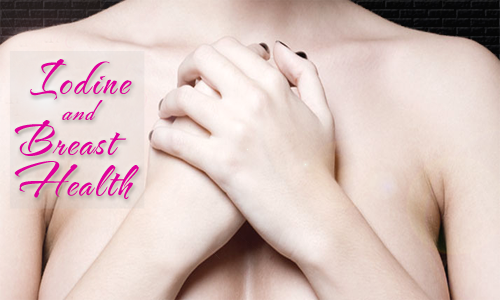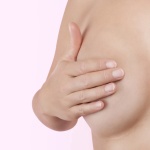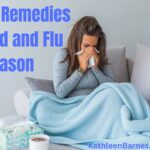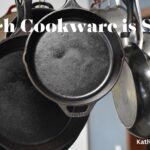Right now, I have five friends with breast cancer in varying stages. One, happily, is emerging from her second round and two have rapidly growing invasive breast cancers.
There are many reasons behind the breast cancer epidemic, and I’m going to throw out a major one that few of us know: Iodine shortfalls.
Iodine is an essential mineral for a wide range of body functions, primarily thyroid health. But breast health holds a close second place.
Since the 1960s, we’ve known that iodine concentrates in breast tissue. Shortfalls in iodine needs have a highly negative impact on the health of breast tissue. Another sad fact from the ’60s and early ’70s: That’s when food manufacturers took healthy iodine out of their flours and added toxic bromine (potassium bromate) to prevent caking. I have no idea why they made this choice, probably if you follow the money, you’ll get it.
Brominated flours products are banned throughout the European Union and Canada because of their toxic effects. Fluoridated water is also non-existent in those countries, for the same reason. As usual, the U.S. lags far behind, choosing to protect the food and toxic chemical industries instead of the health of its citizens.
It is impossible to ignore the weight of the evidence against the conscious addition of toxic halogens to our food supply, contaminants that have been scientifically proven time and time again to deplete iodine stores and cause a variety of diseases, including breast cancer.
Here’s a quick (and hopefully painless) lesson in biochemistry: Iodine, bromine, fluorine and chlorine comprise the halogen chemical family. Iodine is good and essential to human life. The other three are bad news because they block your body’s ability to absorb iodine.
Here’s a bold statement:
Iodine shortfalls cause fibrocystic breast disease and breast cancer.
Fibrocystic breasts or fibrocystic breast disease
This condition has become so common that some doctors argue it isn’t a disease at all. More than half of all women experience fibrocystic breasts at some point in their lives.
Ropy scar-like tissue or cysts and lumps characterize fibrocystic breast disease.
Most professionals agree that fibrocystic breasts do not increase your risk of breast cancer, except in women with another risk factor, such as family history of breast cancer or other genetic predispositions to the disease. Some medical practitioners argue that the lumpiness of fibrocystic breasts may make it more difficult to feel potentially cancerous lumps in a breast self-examination (BSE).
However, there is a common thread between fibrocystic breasts and breast cancer: Both are conditions related to insufficient iodine intake.
Several studies in animals and humans give strong evidence that
- Animals that were intentionally deprived of iodine developed fibrocystic breasts.
- Supplementation with iodine reduces the lumps, bumps and hard spots and even reduced breast size in animals. Just taking 6 mg of iodine a day for six months stopped the pain of fibrocystic breasts for half the women in a 2004 study reported in the journal Breast.
Estrogen, iodine and breast cancer
Iodine deficiency causes estrogen production to become unbalanced and, at the same time, causes breast tissue to be more sensitive to estrogen, increasing the risk of breast cancer. That’s a double-barreled shotgun.
So where does iodine come into this equation? Research from Jonathan Wright, M.D., a bioidentical hormone therapy pioneer, shows that iodine helps maintain the correct balance of the three types of estrogen and even to convert them into safer estriol.
Bernard Eskin, M.D., of Drexel University in Philadelphia, one of the foremost researchers in the field of iodine and breast cancer, conducted animal research in the field for more than 40 years. His work gives us some pivotal basic truths about iodine and breast health:
- Long-term iodine depletion causes changes in breast tissue.
- When sufficient iodine is added to the diet, breast tissue returns to its normal state.
- Normal iodine intake results in normal estrogen function in breast tissue.
- Iodine supplementation blocked the development of cancer in animals given cancer-causing substances.
- Molecular iodine, like that found in kelp and other forms of seaweed, is the most effective form of the mineral for the treatment of all types of breast disease. However, most people do not have kelp in their normal diets, and the amount in kelp varies according to conditions. In addition, laboratory testing has shown high concentrations of heavy metals in kelp and other sea vegetables. That is why it is better to use a supplement when dealing with specific diseases that respond to iodine
Here are more exciting research results showing the connection between low iodine levels in the body and breast cancer:
- Iodine supplementation desensitized estrogen receptors in breast tissue, meaning iodine gets to cells where it is needed rather than being “bumped” by toxic bromines.
- Iodine caused cancer cell death (apoptosis is the medical term) rather than wild reproduction of cells characteristic of cancers of all types.
- It caused more cancer cell death than the commonly used chemotherapy drug, Fluorouracil, also known as 5-FU, which has numerous and debilitating side effects.
Iodine has also been shown to increase the activity of the BRCA1 gene that helps balance estrogen activity in breast tissues and even to increase the effectiveness of the breast cancer drug, tamoxifen and decrease resistance to the drug.
The bottom line
Most of us, especially women, need more iodine in our diets. Iodized table salt doesn’t count since the added iodide begins to ev[porate almost as soon as it is processed. Unrefined sea salt is a good source, but if you have breast cancer, you are a woman over 50 or you live in the United States (!) where brominated flour and fluoridated water supplies are the rule, you need supplemental iodine to overcome the effects of toxic halogens.
I could go on about this forever and will definitely write more about it in the coming months, but consider starting at 12.5 of iodine a day and increase it if you have fibrocystic breasts or breast cancer.







